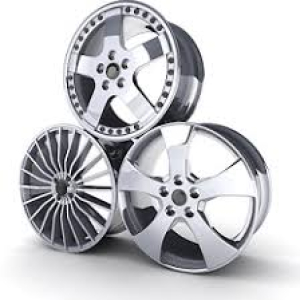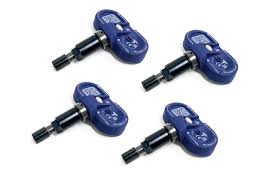When it comes to vehicle safety and maintenance, Tire Pressure Monitoring Sensors (TPMS) are among the most important components of modern vehicles. These sensors continuously monitor the air pressure within your tires and alert you when the pressure is too low or high. Having the right TPMS installed in your vehicle is crucial for both performance and safety. This guide will explore what TPMS is, why it's important, and how you can benefit from installing it in your vehicle.
What are Tire Pressure Monitoring Sensors?
Tire Pressure Monitoring Sensors (TPMS) are devices that measure the air pressure inside your vehicle's tires and provide real-time data to alert the driver if the tire pressure is either too low or too high. The system helps ensure optimal tire pressure, which is important for several reasons, including improving safety, extending the lifespan of tires, and enhancing fuel efficiency.
Installing TPMS is often a standard feature in newer vehicles, and it is now a required safety feature in many countries. However, for those with older vehicles or customized setups, it is essential to know how and where to find affordable wheel stores that offer TPMS installation as part of their wheel accessories package.
Why Are Tire Pressure Monitoring Sensors Important?
TPMS plays a key role in ensuring that your tires are properly inflated, which is crucial for both safety and vehicle performance. Here are a few reasons why Tire Pressure Monitoring Sensors are essential for your vehicle:
1. Enhanced Safety
The most critical benefit of Tire Pressure Monitoring Sensors is safety. Under-inflated tires are a major cause of tire blowouts and can cause the driver to lose control of the vehicle. TPMS alerts you when tire pressure drops below a safe level, allowing you to take action before a dangerous situation occurs.
2. Improved Fuel Efficiency
When tires are properly inflated, the rolling resistance is optimized, which improves fuel efficiency. On the other hand, under-inflated tires cause your engine to work harder, reducing your vehicle’s fuel economy. By keeping your tires properly inflated with the help of TPMS, you can save money on gas in the long run.
3. Prolonged Tire Life
Maintaining the correct tire pressure extends the life of your tires. Over or under-inflated tires can wear unevenly and prematurely. By using a Tire Pressure Monitoring Sensor, you can ensure that your tires last longer, saving you money on tire replacements and improving overall performance.
4. Better Handling and Performance
Proper tire inflation improves the handling and stability of your vehicle. When the tires are inflated to the right level, you’ll experience better traction, braking, and cornering capabilities, especially in wet or slippery conditions. TPMS helps maintain optimal performance by ensuring your tires stay within the ideal pressure range.
How Do Tire Pressure Monitoring Sensors Work?
Tire Pressure Monitoring Sensors are typically installed in the valve stems or inside the tire itself. There are two types of TPMS systems: direct and indirect.
1. Direct TPMS
Direct TPMS uses sensors mounted inside the tire to measure air pressure directly. These sensors send data to your vehicle’s onboard computer, which triggers an alert if the tire pressure drops below a certain threshold. Direct TPMS is considered more accurate because it provides real-time, direct readings from each tire.
2. Indirect TPMS
Indirect TPMS doesn’t measure the tire’s air pressure directly. Instead, it uses the vehicle’s ABS (Anti-lock Braking System) to monitor the rotation of the tires. If one tire rotates faster than the others, the system assumes it’s under-inflated and will alert the driver. While indirect systems are less expensive and simpler to install, they are not as accurate as direct systems.
Where to Buy Tire Pressure Monitoring Sensors
If you’re looking to install Tire Pressure Monitoring Sensors in your vehicle, here are some places to consider:
1. Online Wheel Store
One of the easiest places to find TPMS solutions is through an online wheel store. Many online tire stores offer TPMS kits as part of their wheel accessories and wheel installation kits. Shopping online allows you to compare prices, read reviews, and find the best deals on TPMS sensors and installation kits.
2. Wheel Shops Near Me
If you prefer in-person shopping, you can also visit a wheel shop near me or a California wheel shop. These shops often provide TPMS installation services and can help you select the right sensors for your vehicle. Many tire shops also offer TPMS along with custom wheels and wheel installation kits to help you upgrade your vehicle.
3. Custom Wheels Services
If you're installing custom wheels, some custom wheels services may include TPMS installation as part of their package. This ensures that your custom wheels are compatible with the Tire Pressure Monitoring Sensors and that your vehicle is equipped with all the necessary safety features.
Tire Pressure Monitoring Sensors and Their Installation
When you purchase Tire Pressure Monitoring Sensors, it’s important to understand the installation process. Depending on the type of TPMS you choose, you may need professional installation to ensure the sensors are properly set up and calibrated.
1. Installing TPMS Sensors
Most vehicles with direct TPMS require the installation of the sensors inside the tire itself, which often involves removing the tire from the rim. Many online tire stores and wheel shops offer professional installation services to ensure your TPMS is properly installed and calibrated.
2. Calibration and Resetting
Once your TPMS is installed, it may need to be calibrated. This process ensures that the sensors are accurately reporting tire pressure readings. Some vehicles will automatically calibrate the sensors, while others may require you to reset the system through your car’s onboard settings.
FAQs: Tire Pressure Monitoring Sensors
1. What is the lifespan of a Tire Pressure Monitoring Sensor?
The lifespan of a Tire Pressure Monitoring Sensor typically ranges from 5 to 10 years, depending on usage and maintenance. If you notice your TPMS warning light is illuminated, it may be time to replace the sensor.
2. Can I install TPMS myself?
While it’s possible to install TPMS yourself, it’s recommended to have it installed by professionals, especially if it involves removing the tire or recalibrating the system. Many wheel shops and online tire stores offer TPMS installation kits.
3. Do I need TPMS if my vehicle didn’t come with it?
If your vehicle did not come with TPMS and you are upgrading your wheels, it’s a good idea to install TPMS for safety and convenience. Many tire shops offer TPMS installation kits that can be added during your wheel upgrade.
4. How do I know if my TPMS is working properly?
Most vehicles have a TPMS light on the dashboard that will illuminate if one or more of your tires are underinflated. If the light stays on, or if the sensors aren’t providing accurate readings, it’s time to inspect or replace the sensors.
5. Can I buy a Wheel Installation Kit along with TPMS?
Yes, many online wheel stores offer complete wheel installation kits that include TPMS sensors, along with other necessary components such as valve stems, lug nuts, and balancing equipment.
Call to Action
Ready to upgrade your vehicle with Tire Pressure Monitoring Sensors? Visit our online wheel store to browse a wide selection of wheel accessories, TPMS solutions, and wheel installation kits. Ensure your vehicle is safe and efficient by getting the right TPMS for your car today!







